THE LOST BUS (2025)
A wayward school bus driver and a dedicated school teacher battle to save 22 children from a terrifying inferno.
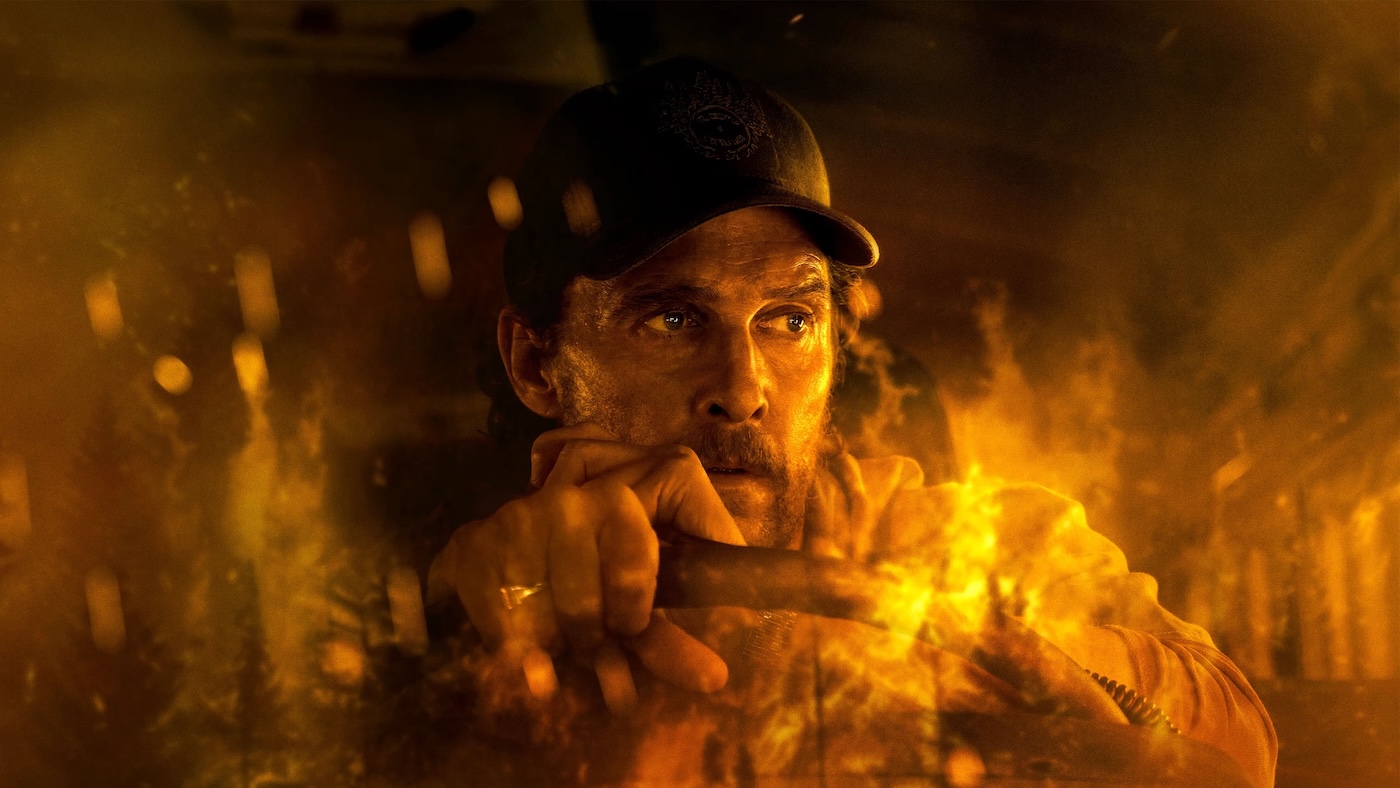
A wayward school bus driver and a dedicated school teacher battle to save 22 children from a terrifying inferno.


Paul Greengrass returns to the genre he was made for, and The Lost Bus feels tailor-made for him. Set in the ironically named Paradise, California, the film recounts the true story of the 2018 wildfires that devastated the Northern Californian community. It follows Kevin McKay (Matthew McConaughey), a struggling school bus driver and single father to a resentful son, while caring for his recently widowed mother. That family dynamic feels authentic, as both his son and mother are portrayed by McConaughey’s real-life family members—Levi and Kay McConaughey—bringing an unvarnished realism to those early scenes.
It takes almost no time to recognise Greengrass’s signature style. The first shot—a tight close-up of Kevin’s eyes as he drives his afternoon route—immediately reintroduces his trademark handheld technique. Later scenes at home reveal a man at breaking point: an aging pet on the brink of euthanasia, an ailing mother, and a son exasperated by his father’s existence. A morning delay forces Kevin to refuel after drop-off rather than before, to the frustration of his boss Ruby (Ashlie Atkinson), a small error that later becomes pivotal. Another critical decision comes when Kevin, caught in mounting traffic, ignores Ruby’s radioed request to return to base.
This is Greengrass’s second collaboration with cinematographer Pål Ulvik Rokseth, and the pairing proves inspired. Rokseth wields the handheld camera with remarkable control, capturing chaos without disorienting audiences—a balance Greengrass perfected during his Jason Bourne era. There’s rarely constant action, yet every moment feels alive with motion and tension. Even a traffic jam—a scene that could have provided a breather—crackles with energy. When Kevin stops the bus and performs a risky U-turn, the shaky, immediate camerawork transforms an everyday decision into a moment of high-stakes intensity.
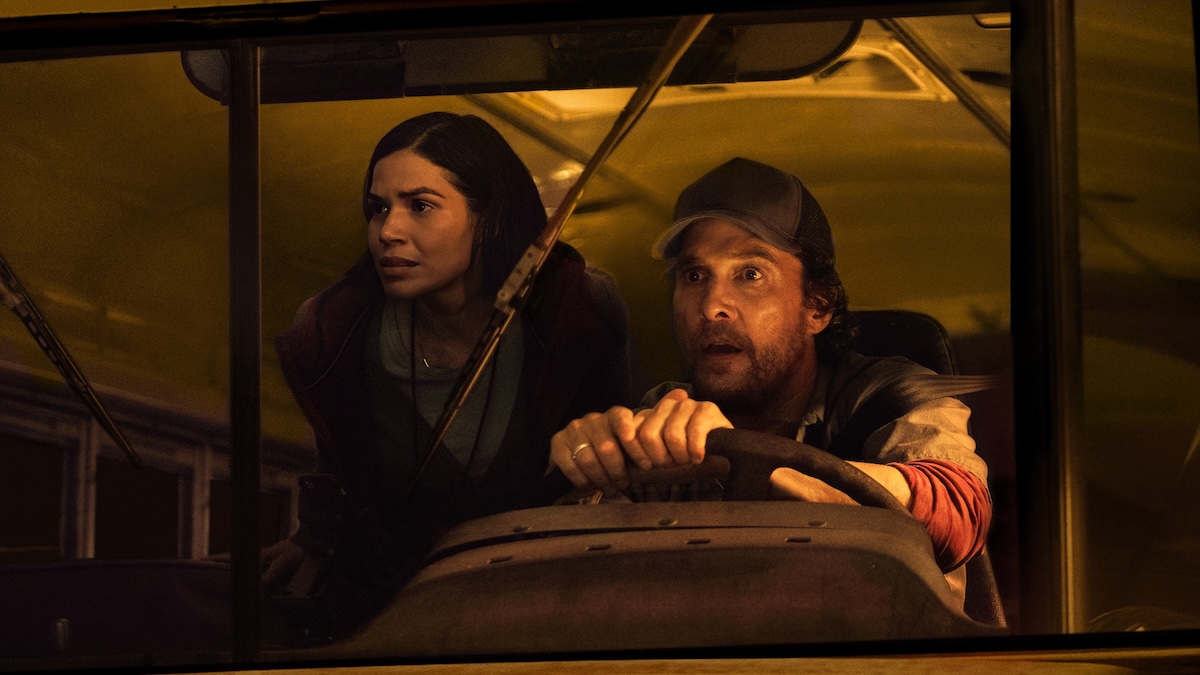
James Newton Howard’s score moves in lockstep with Greengrass’s controlled chaos, amplifying the tension. It’s an anxious, propulsive composition that never lets the audience fully exhale. In several moments, the music becomes the film’s heartbeat—guiding the viewer’s emotions with subtle cues that rise and fall in perfect sync with the camera’s rhythm. Few scores this year feel so organically tied to a director’s visual language.
One of the film’s most striking creative choices is how it treats the fire itself as a character. Between scenes, Greengrass cuts to aerial shots that mirror the fire’s point of view—likely captured by drones swooping and twisting through thick smoke. These sequences lend the blaze a haunting sentience, positioning it as the story’s true antagonist. The technique is both poetic and unnerving, reminding the audience how alive and unstoppable nature can feel when viewed from above.
Another classic Greengrass hallmark appears in the film’s command-centre sequences. From the CIA’s frantic surveillance rooms in the Bourne films to the air-traffic chaos of United 93 (2006) and the naval coordination in Captain Phillips (2013), Greengrass has long balanced ground-level panic with procedural control. The Lost Bus continues that tradition, following firefighters hunched over maps spread across truck bonnets and command tables. Without this counterpoint, the story might have played as a straightforward survival thriller, but the dual perspective gives it depth and a sense of mounting, procedural urgency.
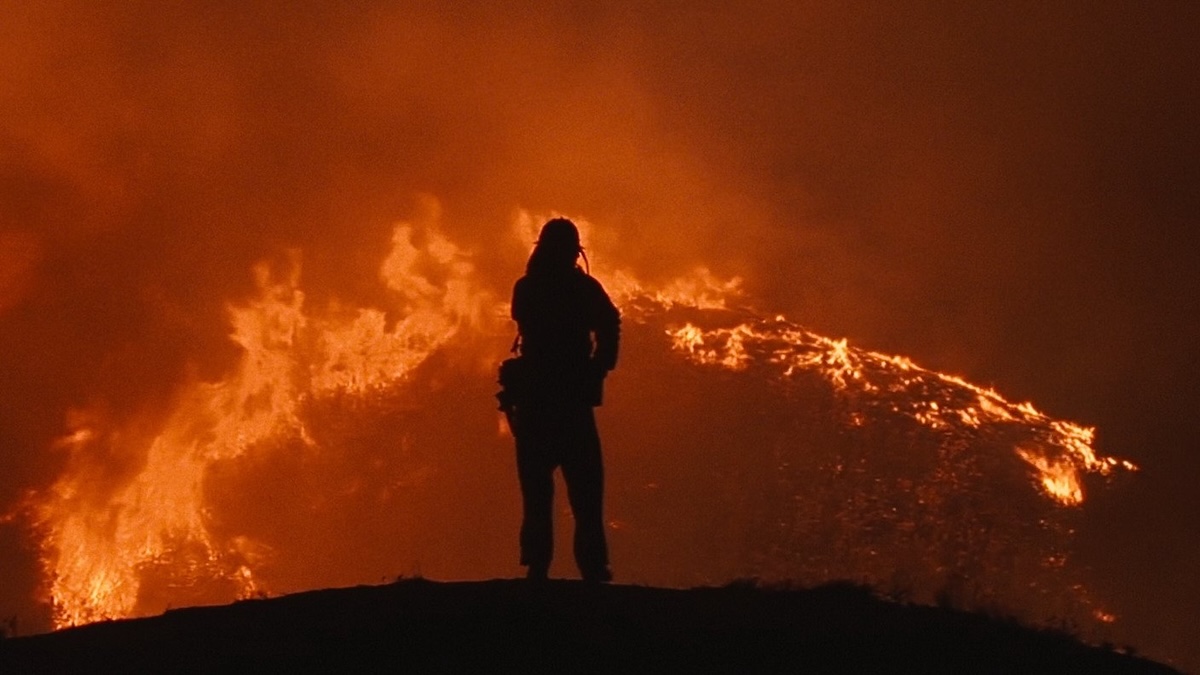
Back in Paradise, a desperate radio call cuts through Kevin’s route: a plea for any available driver to rescue children trapped at a nearby elementary school. One by one, the other drivers respond with excuses—they’re too far away, too close to danger, or already evacuating their others—until Kevin realises he’s the only option left. The call is initiated by teacher Mary Ludwig (America Ferrera), who joins Kevin and the students on their journey through encroaching infernos and collapsing roads. Much of the film unfolds aboard the school bus as smoke thickens, communication dies, and panic mounts. Parents should be forewarned: this is a tense, emotionally draining experience that doesn’t shy away from the terror of children in peril.
Visually, The Lost Bus is extraordinary. Much of the fire on screen is practical—achieved through controlled burns and propane rigs rather than VFX—and the result is startlingly convincing. Greengrass and Rokseth bathe the frame in flickering orange and smoky shadows, creating a sense of proximity to danger. The decision to rely on real fire, rather than CGI, lends the film a tactile authenticity few modern disaster dramas achieve.
McConaughey and Ferrera both deliver exceptional performances. Casting McConaughey (Interstellar) as a worn-down, working-class everyman could have felt like stunt casting, but the makeup and costuming dull his natural glamour just enough to let the performance breathe. He channels Kevin’s internal panic and reluctant bravery with understated power, offering his most impressive work in years. Ferrera brings strength and vulnerability to her character, balancing the need to comfort terrified children with her own palpable fear. In quieter moments, she conveys heartbreak and resolve through minimal dialogue—a performance both subtle and commanding. Atkinson, too, offers a quietly affecting turn as Ruby, the dispatcher forced to console panicked parents while helplessly listening to the situation unfold.
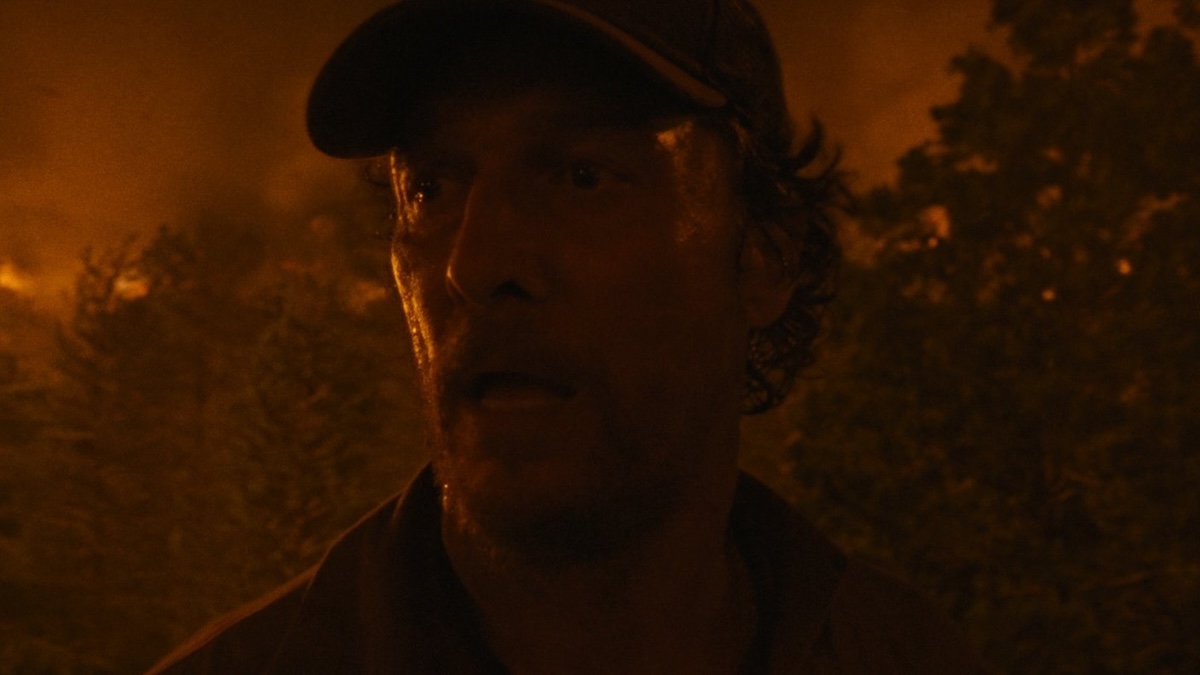
If there’s a flaw in The Lost Bus, it lies in its focus. Only Kevin is given a full emotional arc, while the supporting cast function more as pieces within his moral puzzle than as fleshed-out individuals. There’s also an underlying gender imbalance in how resistance to Kevin’s actions—be it from Ruby, his mother, or his ex-wife—is framed as misunderstanding rather than valid concern. These are minor missteps in an otherwise controlled piece of filmmaking, but they leave small narrative gaps amid the chaos.
Still, Greengrass’s storytelling prowess outweighs the film’s shortcomings. The pacing tightens with each passing minute, culminating in a final act that’s pure adrenaline. During the final climatic sequence, the tension is almost unbearable—a testament to Greengrass’s mastery of controlled realism. Shortly after the scene ended, I realised I’d been gripping the couch cushion in a full fist.
The Lost Bus stands as both a survival thriller and a tribute to courage under impossible circumstances. Paul Greengrass transforms a little-known true story into a visceral cinematic experience that’s as emotionally stirring as it is technically dazzling. It’s not flawless, but its authenticity, urgency, and compassion elevate it above standard disaster fare. For Greengrass, this marks a confident return to the form that made him one of the defining filmmakers of his generation—and for McConaughey, a reminder that true heroism often looks ordinary until the moment it’s tested.
USA | 2025 | 129 MINUTES | 2.35:1 2.39:1 | COLOUR | ENGLISH

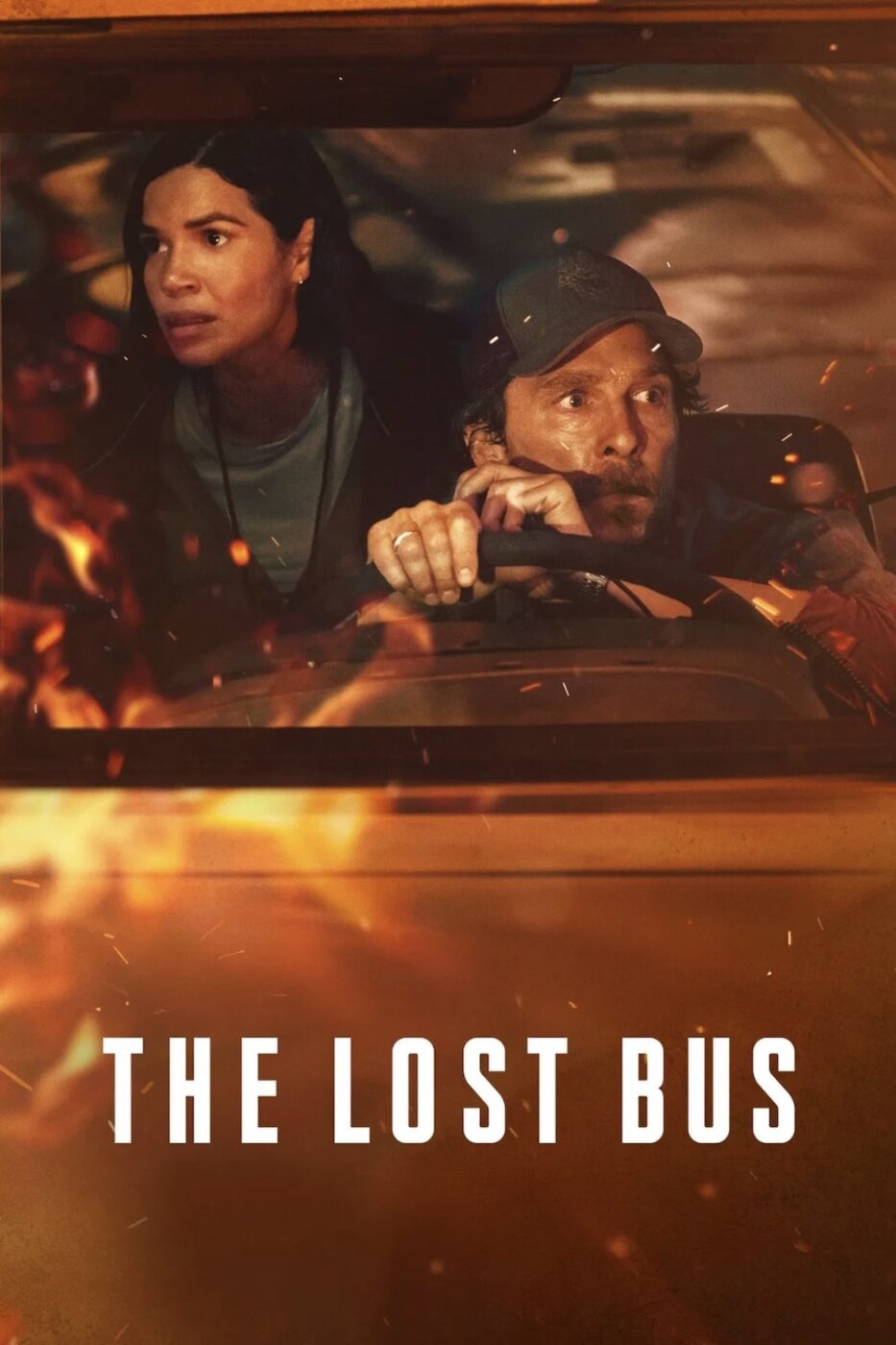
director: Paul Greengrass.
writers: Brad Ingelsby & Paul Greengrass (based on the book ‘Paradise: One Town’s Struggle to Survive an American Wildfire’ by Lizzie Johnson).
starring: Matthew McConaughey, America Ferrera, Yul Vazquez, Ashlie Atkinson, Kimberli Flores, Levi McConaughey & Kay McConaughey.
